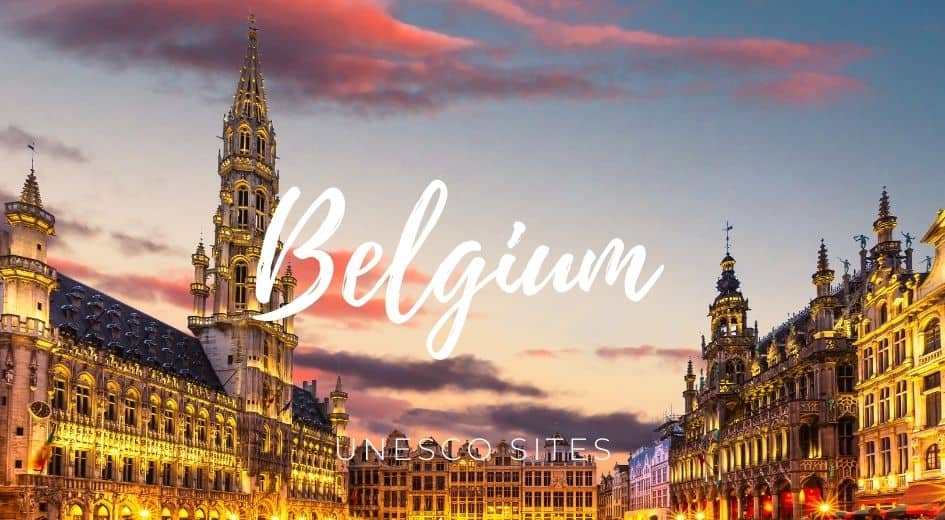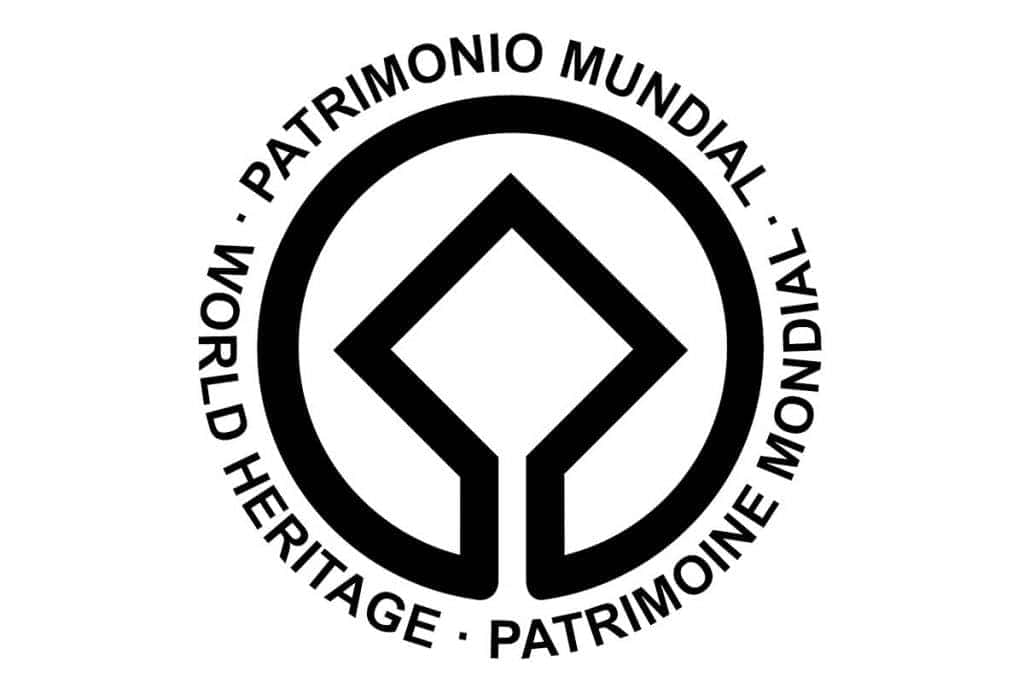Table of Contents


Belgium UNESCO has registered 15 sites on the World Heritage list and 16 on the tentative list.
Some places are so interesting that it’s relevant to keep them for future generations. This is why UNESCO has built a list of crucial classified properties in which superb places stand out for their aesthetic, natural, artistic, or cultural significance.
More than a thousand places are registered as Unesco’s World Heritage worldwide. Due to my interest in visiting World Heritage sites, I compiled the UNESCO list in Belgium and the corresponding map.
Belgium UNESCO list
- Belfries of Belgium and France
- Colonies of Benevolence
- Flemish Béguinages
- Historic Centre of Brugge
- La Grand-Place, Brussels
- Major Mining Sites of Wallonia
- Major Town Houses of the Architect Victor Horta (Brussels)
- Neolithic Flint Mines at Spiennes (Mons)
- Notre-Dame Cathedral in Tournai
- Plantin-Moretus House-Workshops-Museum Complex
- Stoclet House
- The Architectural Work of Le Corbusier, an Outstanding Contribution to the Modern Movement
- The Four Lifts on the Canal du Centre and their Environs, La Louvière and Le Roeulx (Hainaut)
- The Great Spa Towns of Europe
- Ancient and Primeval Beech Forests of the Carpathians and Other Regions of Europe
Belgium UNESCO Map
Click on the blue pins to view more relevant information about each World Heritage site in Belgium.
Description
- Belfries of Belgium and France: a Site that includes 56 belfries in Belgium and France. It is known for its well-preserved examples of medieval bell towers and their historical and cultural significance in the region.
- Colonies of Benevolence: in Belgium and the Netherlands. It is known for its well-preserved social experiment of the 19th century, where poor families were allowed to build a new life in rural areas and work in agriculture.
- Flemish Béguinages: a Site that includes 13 Flemish béguinages located in Belgium. It is known for its well-preserved examples of urban planning and architecture that reflect the unique lifestyle and spirituality of the beguines, a religious community of women.
- Historic Centre of Brugge: is a Site in Brugge, Belgium. It is known for its well-preserved medieval architecture, including the famous Markt Square and Belfry, and its cultural and historical significance as an important center of commerce and culture in the Middle Ages.
- La Grand-Place, Brussels: it is in Brussels, Belgium. It is known for its well-preserved architecture and historical and cultural significance, symbolizing the city’s political and economic power.
- Major Mining Sites of Wallonia: it is in Wallonia, Belgium. It is known for its well-preserved industrial heritage, including the former coal mines and mining infrastructure that played a significant role in the region’s economic development.
- Major Town Houses of the Architect Victor Horta (Brussels): is a Site in Brussels, Belgium. It is known for its well-preserved examples of Art Nouveau architecture and design, particularly the houses designed by Victor Horta in the late 19th and early 20th centuries.
- Neolithic Flint Mines at Spiennes (Mons) is in Mons, Belgium. It is known for its well-preserved examples of prehistoric mining and flint knapping, providing valuable insights into early human technology development.
- Notre-Dame Cathedral in Tournai: Tournai is a UNESCO World Heritage Site in Tournai, Belgium. It is known for its well-preserved Romanesque and Gothic architecture, particularly its five towers and stained glass windows.
- Plantin-Moretus House-Workshops-Museum Complex: it is in Antwerp, Belgium. It is known for its well-preserved examples of 16th-century printing and publishing, particularly the printing presses and workshops of Christophe Plantin and Jan Moretus.
- Stoclet House: is a Site in Brussels, Belgium. It is known for its well-preserved example of Art Nouveau architecture and design, particularly its interior decoration and furnishings designed by Josef Hoffmann and Gustav Klimt.
- The Architectural Work of Le Corbusier, an Outstanding Contribution to the Modern Movement: is a Site with 17 buildings designed by the Swiss-French architect Le Corbusier in Argentina, Belgium, France, Germany, India, Japan, and Switzerland. It is known for its well-preserved examples of modernist architecture and design that reflect Le Corbusier’s innovative and influential style.
- The Four Lifts on the Canal du Centre and their Environs, La Louvière and Le Roeulx (Hainaut): is a Site in La Louvière and Le Roeulx, Belgium. It is known for its well-preserved hydraulic engineering infrastructure, particularly the four hydraulic boat lifts built in the late 19th and early 20th centuries which played a significant role in the region’s economic development.
- The Great Spa Towns of Europe: is a UNESCO World Heritage Site that includes 11 spa towns located in seven European countries, including Austria, Belgium, the Czech Republic, France, Germany, Italy, and the United Kingdom. It is known for its well-preserved examples of 19th-century spa culture and architecture, including thermal baths, hotels, and other buildings associated with the spa industry.
- Ancient and Primeval Beech Forests of the Carpathians and Other Regions of Europe: is a Site that includes a network of 78 protected areas in 12 countries across Europe, including Austria, Belgium, Bulgaria, Croatia, Germany, Italy, Romania, Slovakia, Slovenia, Spain, Ukraine, and Albania. It is known for its well-preserved and diverse ecosystem, including beech forests that have been untouched for centuries and provide habitat for numerous plant and animal species. The site also has significant cultural and historical value, as it reflects the long-standing relationship between humans and the natural environment in the region.
UNESCO World Heritage Sites in Belgium have protected places for their cultural and natural importance.
Sites on the Tentative List
- Le noyau historique médiéval ou la ‘Cuve’ de Gand, et les deux abbayes qui sont à son origine
- Noyau historique d’Antwerpen -Anvers- de l’Escaut aux anciens remparts de vers 1250
- Leuven/Louvain, bâtiments universitaires, l’héritage de six siècles au sein du centre historique
- Les passages de Bruxelles / Les Galeries Royales Saint-Hubert
- L’œuvre architecturale d’Henry van de Velde
- Le Palais de Justice de Bruxelles
- Le plateau des Hautes-Fagnes
- Le tronçon Bavay-Tongres de la chaussée romaine Boulogne-Cologne situe sur le territoire de la Région wallonne
- Le palais de Princes Evêques de Liège
- Le champ de bataille de Waterloo, la fin de l’épopée napoléonienne
- Le Panorama de la Bataille de Waterloo, exemple particulièrement significatif de « Phénomène de Panoramas »
- Les citadelles mosanes
- Hoge Kempen Rural – Industrial Transition Landscape
- Sites funéraires et mémoriels de la Première Guerre mondiale (Front Ouest)
- Les sites à fossiles néandertaliens de Wallonie
- Hôpital Notre-Dame à La Rose – Lessines


